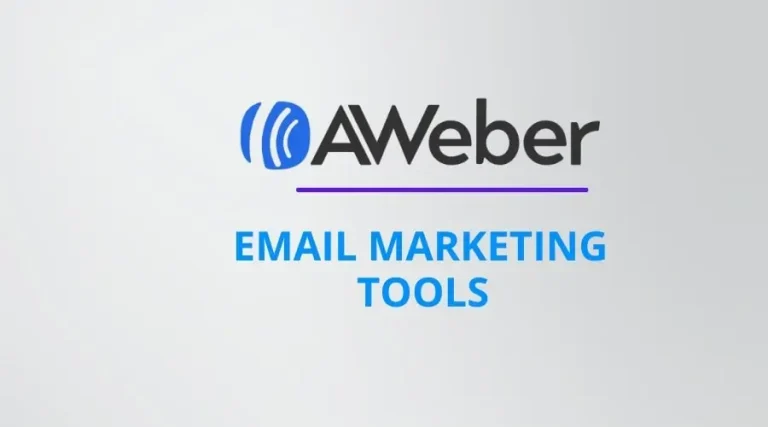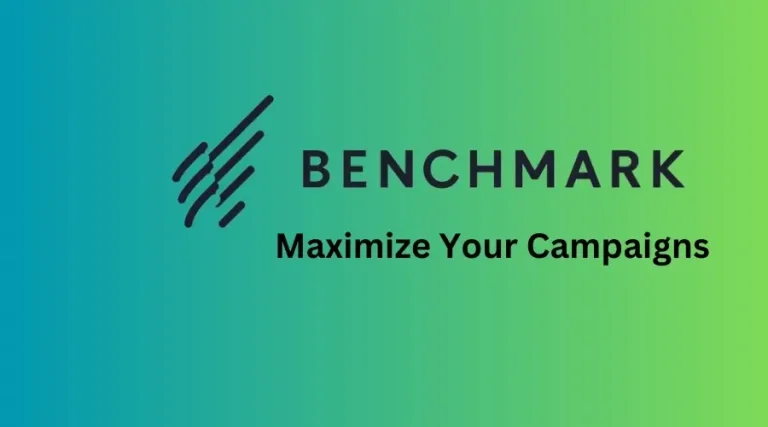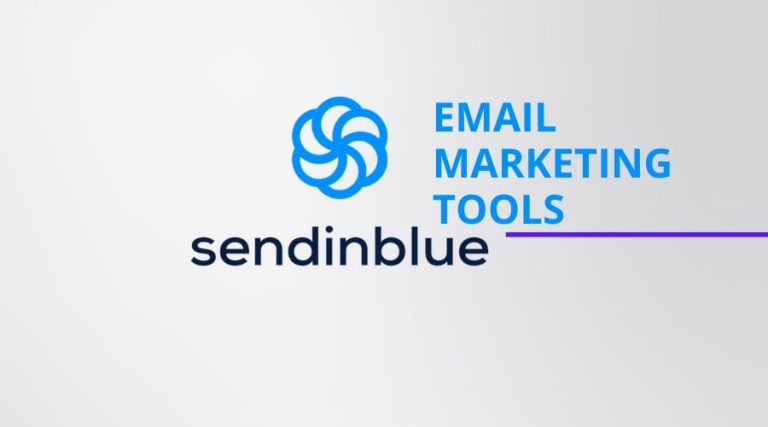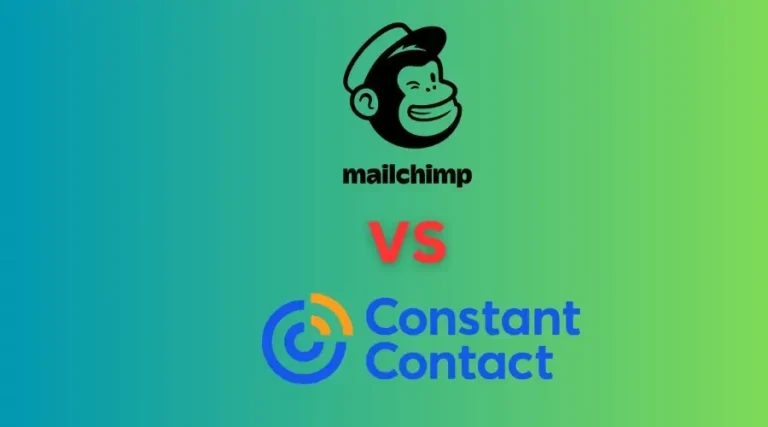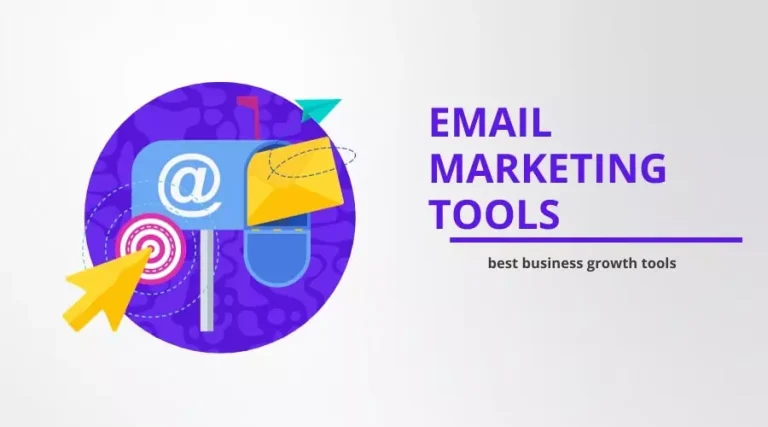ActiveCampaign specializes in email marketing, marketing automation, and CRM for small-to-midsize businesses. It streamlines customer experiences through an intuitive, user-friendly platform.
ActiveCampaign stands out as a powerful tool for businesses aiming to connect with their customers through personalized communication. By combining various facets of email marketing, automation, sales automation, and CRM, it enables businesses to deliver targeted messages and nurture leads more effectively.
Its easy-to-use interface supports complex marketing strategies without requiring extensive technical knowledge, which makes it an ideal choice for entrepreneurs and growing companies. It’s a scalable solution that grows with your business, providing advanced features such as site and event tracking, SMS marketing, and even machine learning capabilities for better engagement predictions and customer segmentation.
Engaging audiences with the right message at the right time becomes less of a challenge and more of a strategic advantage with ActiveCampaign.
Understanding Activecampaign Automation Basics
Welcome to the world of marketing automation with ActiveCampaign, where nurturing leads and streamlining campaigns becomes effortless thanks to its advanced automation features. In this section, we’re diving into the fundamentals of ActiveCampaign’s automation tools to help you nurture your customer relationships with finesse. Whether you’re a seasoned marketer or new to the platform, understanding these basics is the key to unlocking a more efficient and effective marketing strategy.
Setting Up Automation In Activecampaign
Initiating the automation journey in ActiveCampaign begins with a few simple steps. Firstly, navigate to the ‘Automations’ tab on your dashboard. Here, you can either select a pre-built automation template designed to match common business scenarios or opt to create a custom automation from scratch.
- Click on ‘New Automation’.
- Choose a template or start from scratch.
- Give your automation a descriptive name to reflect its purpose.
The automation editor opens up, presenting a visual canvas where you can design your automation’s flow. The drag-and-drop interface makes adding steps and actions user-friendly. Don’t forget to save your automation before exiting the editor.
Exploring Automation Triggers And Actions
Triggers and actions form the crux of ActiveCampaign’s automated workflows. A trigger is an event that starts an automation, such as when a user subscribes to a list or submits a form. Actions are tasks that occur once an automation has started, like sending an email, updating a contact’s profile, or waiting for a specific period before the next step.
- Triggers can be based on contact behaviors, email engagements, or deal updates.
- Actions include email sends, contact tagging, deal creation, and more.
Combine these elements to craft a seamless flow that corresponds to your marketing objectives. For instance, you might set an automation to trigger when a contact joins a segment, followed by actions to send a welcome series and apply a new tag once the series is completed.
Creating Automation Maps For Different Scenarios
An automation map lays out the journey a contact will go through within your marketing campaign. For various scenarios, you’ll want custom maps to better target and engage your audience.
Consider your end goal: Is it to welcome new subscribers, nurture leads, or promote a webinar? Use goals, waits, and if/else conditions to route contacts through different pathways based on their actions or profile changes.
Here’s a simple table that presents a typical welcome sequence mapped out:
| Step | Action | Description |
|---|---|---|
| 1 | New Subscriber | Triggers when a user subscribes to your list. |
| 2 | Send Welcome Email | The initial message acknowledging subscription. |
| 3 | Apply ‘New Lead’ Tag | Tags the subscriber for segmentation and targeting. |
| 4 | 3-Day Wait | Gives a subscriber time to engage with the first email. |
| 5 | Send Follow-up Email | Additional content or offer to keep the subscriber engaged. |
Creating automation maps tailored to different scenarios enables a more personalized approach to your contacts while scaling your marketing efforts. ActiveCampaign gives you the tools to visualize and edit these maps for optimum performance, ensuring your automation processes are both sophisticated and efficient.
Advanced Segmentation Strategies For Targeted Automations
Embracing the power of ActiveCampaign’s segmentation tools is a game-changer for marketers seeking to deliver hyper-personalized content. Advanced Segmentation Strategies for Targeted Automations enable you to finetune your outreach, ensuring that the right message lands in front of the right audience at the perfect time. By mastering these strategies, businesses can dramatically increase engagement, conversion rates, and customer retention. Let’s dive into how to leverage these features effectively within ActiveCampaign for maximum impact.
Leveraging Tags And Custom Fields For Segmentation
Tags and custom fields are powerhouse features within ActiveCampaign that facilitate nuanced segmentation of your contacts. By assigning tags based on behavior, interests, or stage in the sales funnel, you can create segments that resonate with specific groups. Additionally, custom fields capture unique information that allows for even more granular targeting.
- Tags: Use to label contacts based on interactions such as email opens, link clicks, or event attendance.
- Custom Fields: Collect specific data like industry, company size, or product preference to fine-tune your approach.
These collected data points enable the creation of dynamic segments that trigger tailored automations, leading to higher engagement and conversion rates.
Utilizing Lead Scoring For Personalized Automations
Lead Scoring is a pivotal technique that assigns values to contacts based on their engagement level or demographic attributes. This method helps in distinguishing between cold leads and those who are ready to convert, allowing for the automation of personalized communication flows.
| Lead Score | Action |
|---|---|
| High Score | Trigger sales-focused automations like a discount offer or a personal call from the sales team. |
| Medium Score | Automate nurturing campaigns with informative content to build trust and authority. |
| Low Score | Enter into educational sequences to further engage and gauge interest. |
By aligning your automations with lead scores, you deliver timely, pertinent messages that drive meaningful interactions.
Implementing Conditional Content Based On Segmentation
Conditional content takes segmentation to the next level by allowing the inclusion of content within emails that only appears to certain segments. With ActiveCampaign, you can set conditions that display specific messages, offers, or information based on a contact’s tags, custom fields, or lead score.
- Define your segments clearly using tags, custom fields, and lead scores.
- Create conditions within your emails or automations to match these segments.
- Craft personalized content that will only show to contacts if they meet the set conditions.
This approach ensures recipients feel understood and valued, resulting in higher engagement rates and a deeper connection with your brand.
Read also: different email marketing tools
Harnessing The Power Of Activecampaign Workflows
In the dynamic world of digital marketing,
ActiveCampaign’s robust workflow automation stands out as a transformative tool
that meticulously nurtures leads and scales customer interactions. With ActiveCampaign,
businesses can craft personalized paths leading potential customers through
a meticulously designed journey. The essence of maximizing these workflows lies in understanding
their capabilities and integrating them seamlessly into your marketing strategy.
Designing Complex Workflows For Lead Nurturing
Creating an intricate web of lead nurturing strategies becomes nearly effortless with ActiveCampaign’s versatile workflows.
These automated sequences are tailored to guide prospects through the sales funnel with precision and care.
- Email sequences: Forge a connection with auto-generated emails that address the lead’s specific interests and behaviors.
- Content delivery: Provide timely and relevant content to keep the potential customer engaged.
- Scoring mechanisms: Implement scoring rules to qualify leads and ensure they receive attention proportionate to their engagement level.
The goal is to develop a systematic approach that resonates with each lead, making every interaction valuable and impactful.
Integrating External Apps And Services With Activecampaign Workflows
Beyond its built-in features, ActiveCampaign shines in its ability to connect with a host of external applications and services.
Integration possibilities are vast, ranging from CRM platforms to social media tools.
| Service Type | Benefits of Integration |
|---|---|
| CRM Platforms | Seamless transfer of lead information and interactions for comprehensive relationship management. |
| Social Media Tools | Automate social campaigns and track performance directly within ActiveCampaign workflows. |
| Webinar Software | Ease of managing registrations and follow-up communications for online events. |
Leveraging these integrations, businesses can create a unified marketing ecosystem with ActiveCampaign at its core.
Leveraging Wait Conditions And Goals For Optimized Automation Performance
The effectiveness of any automation lies in its timing and relevance. ActiveCampaign enables users to
optimize performance by employing wait conditions and goals within their workflows.
- Wait Conditions: Set up delays based on time or actions to ensure messages reach leads at the most opportune moments.
- Goals: Define and track specific objectives to move leads fluidly through the funnel, adjusting the path dynamically as conditions evolve.
These features allow for a level of adaptable automation that keeps communications relevant
and interactions impactful, ultimately improving conversion rates and nurturing stronger customer relationships.

Credit: www.udemy.com
Creative Personalization Techniques With Activecampaign
Creative personalization techniques are transforming the way businesses communicate with their audience. ActiveCampaign, as a leader in customer experience automation, offers powerful tools that allow you to craft highly personalized marketing campaigns. This capability ensures that every interaction with your customers feels uniquely tailored, building stronger connections and boosting engagement rates. Let’s explore some of the sophisticated personalization techniques ActiveCampaign provides that can elevate your marketing strategy.
Dynamic Content For Tailored Communication
With ActiveCampaign, dynamic content goes beyond a simple name tag. This feature enables you to customize entire blocks of content based on subscriber data. Whether it’s past purchase behavior, location, or engagement level, dynamic content adjusts what recipients see in your emails, making each message resonate more deeply.
- Segment users based on specific criteria to ensure content relevance.
- Test different versions of content to discover what performs best for each segment.
- Automatically update content in real-time based on when the email is opened, delivering the most up-to-date messages.
Imagine sending a promotional email where users in cold climates see winter clothing, while those in warmer regions view summer gear. Dynamic content makes this level of personalization a reality.
Behavioral Targeting For Personalized User Experiences
ActiveCampaign‘s behavioral targeting capabilities take personalization a step further by using actions your users have taken—or not taken. Craft your campaigns based on the pages they’ve visited, the links they’ve clicked, or even the products they’ve hovered over. This data empowers you to:
- Deliver tailored messages that align with the user’s journey on your site.
- Send triggered emails based on user behavior, such as cart abandonment or browsing history.
- Create a sense of individual care that goes well beyond generic marketing blasts.
Behavioral targeting helps you anticipate your customer’s needs, offering them solutions and products they’re genuinely interested in, which can lead to increased conversion rates.
Leveraging Merge Tags And Conditional Content For Dynamic Campaigns
Merge tags and conditional content represent some of the most potent tools in ActiveCampaign’s personalization arsenal. These features allow you to personalize specific aspects of your content for different members of your audience without having to create multiple campaigns. Let’s break down the process:
- Use merge tags to insert personal data like names, company names, or past purchases into your emails.
- Conditional content is based on if-then logic that adapts the message to fit specific audience attributes or behaviors.
- Combine both to enhance your campaign’s relevance, increasing the likelihood of engaging customers and driving action.
For instance, you might set up an email campaign for a webinar sign-up. Using conditional content, ActiveCampaign can modify the call-to-action based on whether the recipient has attended a webinar before, directly aligning with their past interactions.
Optimizing Activecampaign Automations For Lead Conversion
Converting leads is critical for the success of any digital marketing campaign. With ActiveCampaign, you get access to powerful automations that can effectively nurture and convert leads—if you optimize them correctly. In this section, we dive into how to refine your ActiveCampaign automations, ensuring every element is tailored to drive conversions. Let’s take your lead conversion rates to new heights!
A/b Testing Automation Performance
A/B testing, or split testing, is pivotal in optimization. By testing different versions of your automations, you can uncover what resonates best with your audience. Variables might include subject lines, email content, or send times. Here are some steps:
- Set a Clear Goal: Decide what conversion metric you’re looking to improve—perhaps email open rate or click-through rate.
- Create Variations: Make small changes to one aspect of your automation for each test.
- Measure Results: Use ActiveCampaign’s testing tools to analyze which variation performs better, and apply those findings.
Continual A/B testing ensures your automations remain effective and relevant.
Analyzing Automation Reports For Insights
Insightful data guides informed decisions. With ActiveCampaign’s detailed reports, you can:
- Analyze which automations yield the highest conversion rates.
- Identify bottlenecks where potential customers are dropping off.
- Track lead behavior to refine your automation triggers and content.
By scrutinizing your automation reports, you’ll gain actionable insights that can drastically improve lead conversion.
Implementing Conversion-focused Automation Tweaks
Making data-driven tweaks to your automations can significantly increase conversions. Focus on areas like:
| Tweak | Expected Impact |
|---|---|
| Timing: Adjust the send time of emails. | Improves open rates and engagement. |
| Personalization: Use contact data to create personalized messages. | Enhances relevancy and response rates. |
| Segmentation: Group your leads based on behavior or demographics. | Better targeting leads to higher conversions. |
Remember, the goal is to create a seamless, personalized journey that guides leads to becoming customers.
Frequently Asked Questions For Activecampaign
What Is Activecampaign Used For?
ActiveCampaign is a marketing automation platform. It helps businesses engage with customers through automated emails, targeted campaigns, and messaging. Its features include email marketing, CRM, and machine learning for better customer experiences.
How Does Activecampaign Improve Customer Engagement?
ActiveCampaign improves engagement by personalizing customer interactions. It segments audiences, tracks behavior, and triggers messages based on actions. This creates relevant communication, increasing the likelihood of customer response and retention.
Can Activecampaign Integrate With Other Tools?
Yes, ActiveCampaign integrates with over 850 apps and services. These include CRMs, payment processors, and web services, enhancing its functionality and automating workflows across different platforms for businesses.
Is Activecampaign Suitable For Small Businesses?
ActiveCampaign is suitable for businesses of all sizes, including small ones. It offers scalable solutions that fit various budgets and marketing needs, allowing small businesses to grow while using the platform.
Conclusion
ActiveCampaign empowers users to streamline their marketing and sales efforts. By offering a suite of tools in one platform, it facilitates personalized customer experiences. With its ease of use and powerful automation, businesses of all sizes can elevate their engagement strategies.
Embracing ActiveCampaign can truly revolutionize your digital outreach. Ready to take the plunge? The possibilities for growth and connection are waiting.

